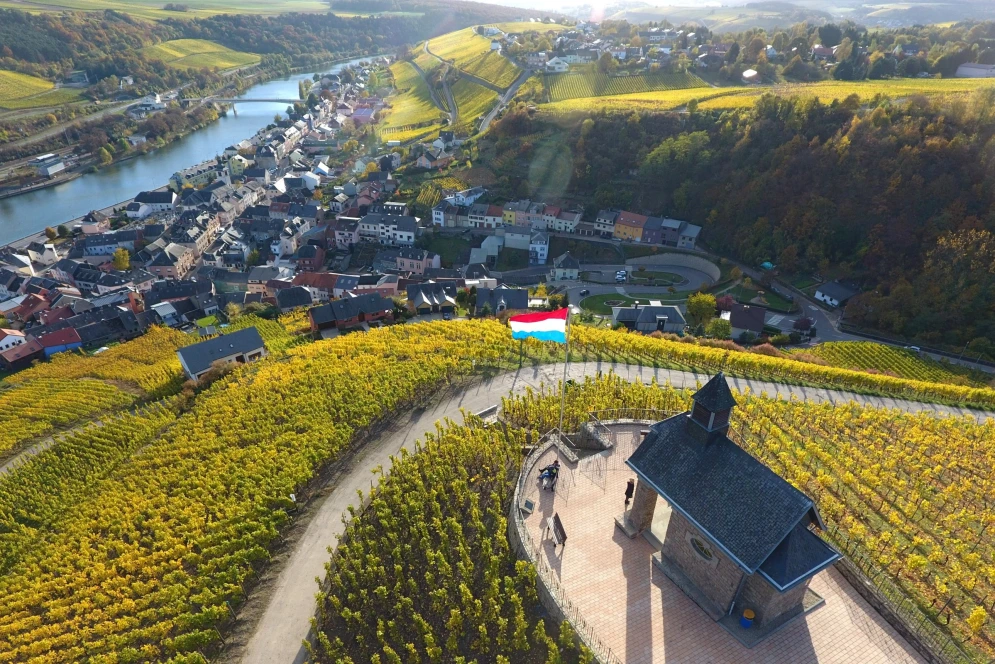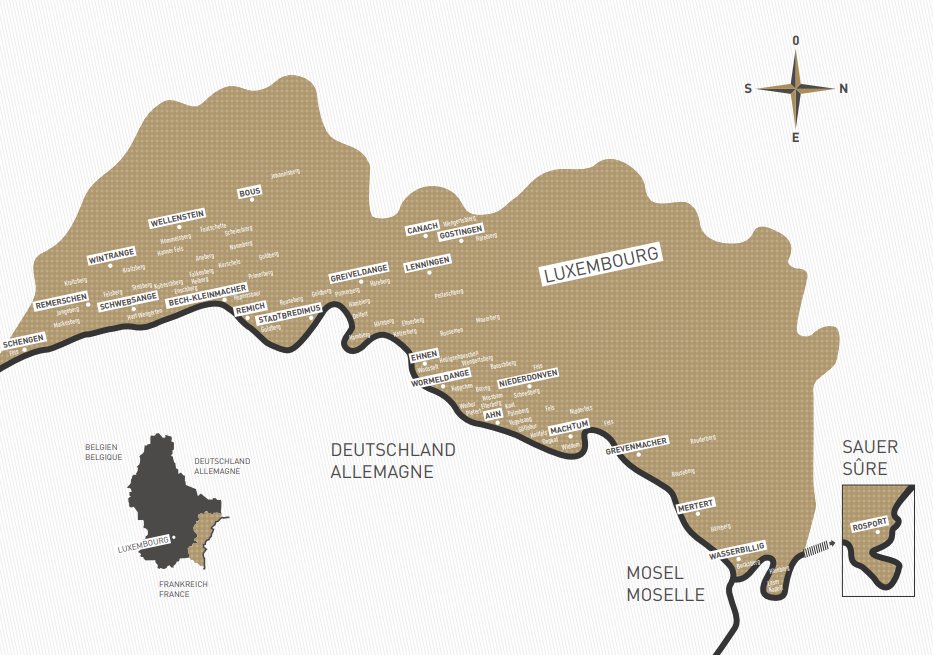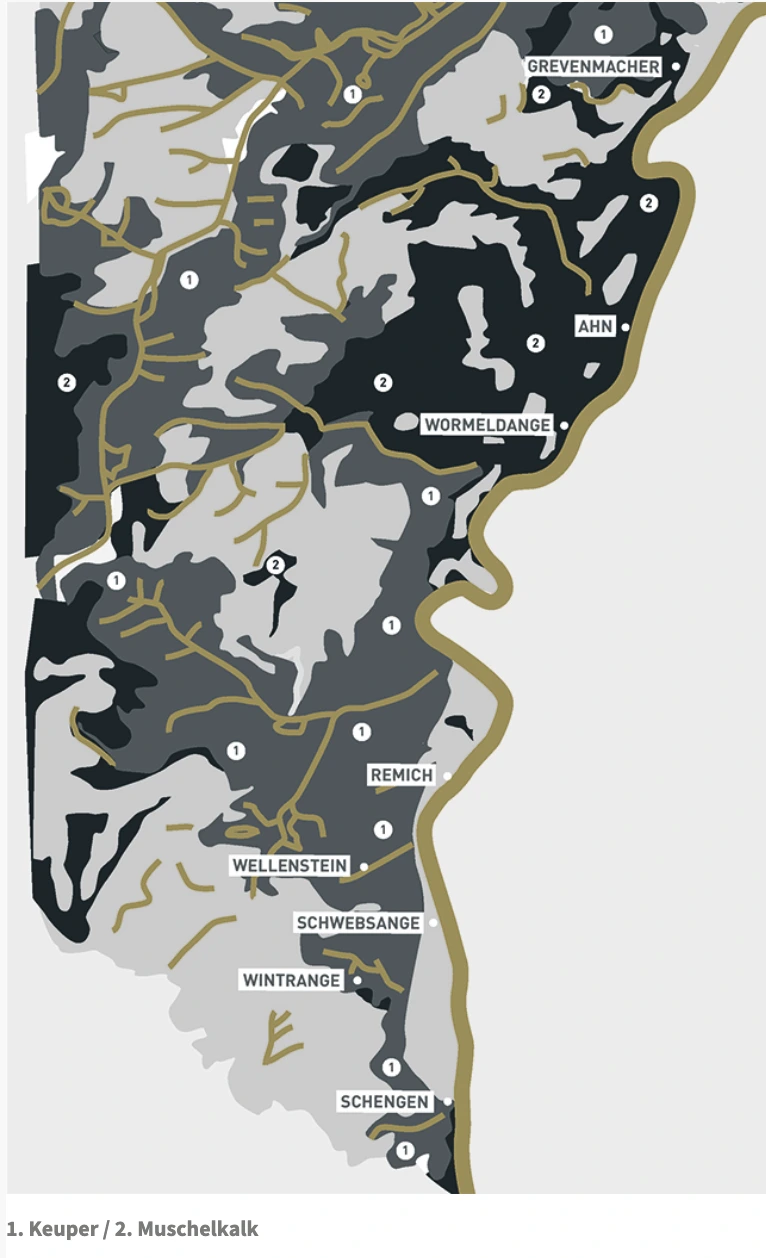©Luxembourg wines and crémants

© Carlo Rinnen
Luxembourg
The Grand Duchy of Luxembourg is a small country of about 625,000 inhabitants, very cosmopolitan, located in the heart of Europe whose capital has many European institutions and monuments listed by UNESCO.
Luxembourg is represented by 5 regions including the Moselle, “D’Mousel” for close friends. It has a dynamic and modern viticulture surrounded by its beautiful valleys and traditions such as the grape and wine festival in Grevenmacher. The Moselle, the main watercourse in Luxembourg, also offers a natural border with Germany.
Did you know?
It was in the Luxembourg Moselle, more precisely in the wine-growing village of Schengen, that one of the most important agreements in European history was signed in June 1985.
The Schengen Treaty then provides for the abolition of all border controls between 5 European countries united under the name of the Schengen Area. Currently 26 states are members.

Source : PDO Luxembourgish Moselle
The Luxembourg vineyards extend over 42 km between Schengen and Wasserbillig, on sometimes steep and abrupt banks. This region mainly produces white wines rich in character, both still and sparkling, but also some specialties such as late harvests, straw or ice wines.
These northern wines, authentic and sincere, have required an unwavering commitment and a thorough mastery of techniques revealing the great professional skills and know-how of the region, which is less sunny than its southern counterparts.
White grape varieties
Fresh, racy and mineral wines are obtained from the Elbling, Pinot blanc and Riesling grape varieties. Round, full-bodied wines with complex aromas are obtained from the Rivaner, Auxerrois and Pinot gris grape varieties. To produce fresh and fruity wines, the aging generally takes place in stainless steel vats. The length of aging depends on the type of wine. Sometimes, wooden barrels (foudres) or barrels are also used. These maturing methods give the wines more complexity and different aromas.
Red grape varieties
Luxembourg red wines are made from Pinot noir, Pinot noir précoce, Saint Laurent and Gamay grapes. It is the Pinot Noir which plays a preponderant role. Depending on the profile of the wine, the red wines are matured in stainless steel tanks or in barrels (barriques or foudre). The winemaker can still influence the character of his wine through the maturation and vinification.
Pinot noir plays an important role, whether as a base wine for Crémant, as a rosé or white wine for summer, or as a complex red wine, aged in barrels. Other varieties such as early Pinot Noir, Saint Laurent and Gamay play a secondary role.

Source : PDO Luxembourgish Moselle
The vines of the Moselle grows on 2 very distinct rock formations
1. Keuper
In the canton of Remich, the vines grow mainly on Keuper with clayey marls. Keupérien marls were born 195 to 230 million years ago, following the silting up of a gigantic ocean. From Schengen to Greiveldingen, the valley is rather open. The rounded and gently sloping slopes give rounded and harmonious wines, just like the landscape.
2. Muschelkalk
In the canton of Grevenmacher, fissured terraces of limestone rocks predominate. Shell limestone was formed by marine sediments 205 – 215 million years ago. The slow erosion between Greiveldingen and Grevenmacher has formed a narrower valley, with steep dolomitic slopes, which allows the creation of racy and elegant wines.
In 2020 …
Cultivated vineyard area (ha)
wine production
- Grape variety for white wines 90%
- Grape variety for red wines 10%
Source : Luxembourg statistical portal
